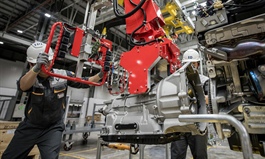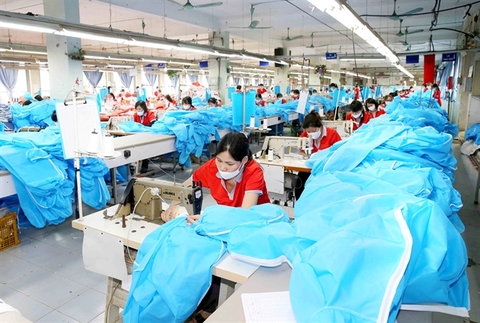Small private sector firms need crucial breakthrough
Small private sector firms need crucial breakthrough
Large private sector corporations could possibly provide the right nexus to play a lead role in rejuvenating the value chain once again, and give the necessary push for a breakthrough for crucial small private sector development in the post Covid-19 phase.
Illustrative photo.
|
Few businesses of stature
Currently, it is estimated that 758,610 enterprises are operating across the country, of which 97.2% are micro, small or medium enterprises (MSMEs). Among these, 93.7% are small and micro enterprises, of which 62.6% are all micro enterprises. There are about 17,000 large scale enterprises, accounting for 2.8% of total number of operating enterprises. The number of active enterprises with average business results in the 2016 to 2018 period in the whole country were around 558,703, of which 540,548 were private enterprises, accounting for 96.8%; and 15,686 of these were FDI enterprises, accounting for 2.8%; while 2,469 were SOEs, accounting for 0.4% of the total number of operating enterprises.
For the last few years there has been an absence of medium scale and large scale private firms, and therefore the private sector has been operating in moderation for a very long time. The speed at which small businesses are upgrading to medium enterprises is very slow, with also dwindling in numbers. In recent years, there has been a pattern where hundreds of private firms take about ten to twenty years to develop and upgrade to medium scale enterprises. However, when they are relatively successful, they decide to withdraw from the market, and either sell out completely or merge with another enterprise, which is quite often an FDI enterprise. This is a major bottleneck which is in the path towards the development of private enterprises in particular and private sector in general.
The private run MSMEs cannot break out by themselves and develop without the help and support of large private firms. Independently they cannot create a value chain. SMEs are an important factor of the private sector, but to create the necessary push for the private sector to develop, it is necessary to have the support of larger enterprises. In this respect, the South Korean chaebol development model can serve as an example for policy change in building private sector corporations in Vietnam.
Mr. Hong Sun, Vice President and General Secretary of the South Korean Business Association in Vietnam (Korcham), shared that South Korea's experience with chaebol shows that we cannot build a modern industrial economy by relying on SMEs, because it is just large enterprises that have the ability to access capital and technology to participate in producing goods for export. Mr. Hong Sun believes that the government must support private firms, starting with the smaller ones in real estate, in industrial zones, infrastructure and the domestic market, that are showing rapid increasing incomes.
According to Mr. Hong Sun, the 1980s was a difficult and challenging period for South Korean private enterprises, but it was also a period that played a decisive role for private corporations to become a strong force, and for strong technology development, which then created a value chain for the private sector. During the 1990s, the five biggest chaebols, namely, Samsung, Hyundai, LG, Daewoo and SK, generated upto 50% of South Korea's total GDP.
Division of market
According to Asso.Prof.Dr. Tran Dinh Thien, a member of the Government Advisory Group, one of the points to note when focusing on large scale enterprises is a clear division of the market and the investment sector, so that private enterprises do not step over each other, but actually support each other in the process of development.
Dr. Thien stressed that large scale enterprises have their own strengths and their own investment sources. For example, private firms specializing in technology should focus on technology, businesses specializing in traffic should focus on traffic, or businesses specializing in real estate should strengthen on real estate. This means that private firms specializing in a field that needs both technology and capital in that field, should avoid spreading investment to ultimately bring desired results.
Realistically speaking if private firms spread out too thin then their core business suffers. Therefore, it is necessary to have a goal focus as well as policy support from the State. For example, in South Korea in the 1950s and early 60s, domestic companies mainly produced textiles. However, by the 70s, the government decided to rapidly develop heavy industries such as steel, petrochemical, automobiles, machine building, shipbuilding and electronics. The government selected the chaebol with the most potential units and motivated them to implement this scheme with huge concessional loans. By the late 80s, some chaebol had become large conglomerates on an international scale. On an average, each chaebol has dozens of subsidiaries specializing in varied industries.
According to Dr. Vu Tien Loc, Chairman of Vietnam Chamber of Commerce and Industry (VCCI), after building value chains, the large private cooperations shared resources with smaller and medium private firms for mutual development, as broad vision, core values, and strategic goals, are beyond the purview of small private enterprises. This is evident in the case of large Japanese corporations who often do not develop support industries, but work with other enterprises, of which most are SMEs. This helps to improve supply, as well as support the growth and development of several small and medium private enterprises, along with maintaining a sustainable product value chain.


























